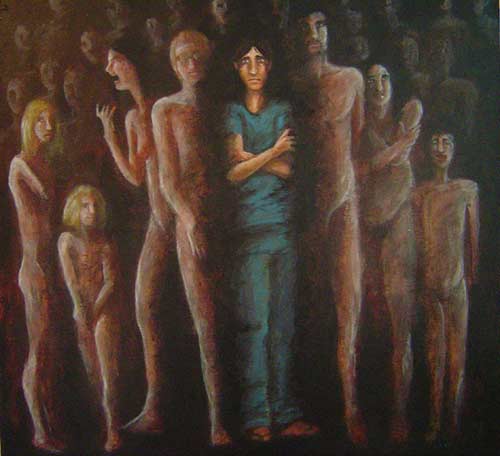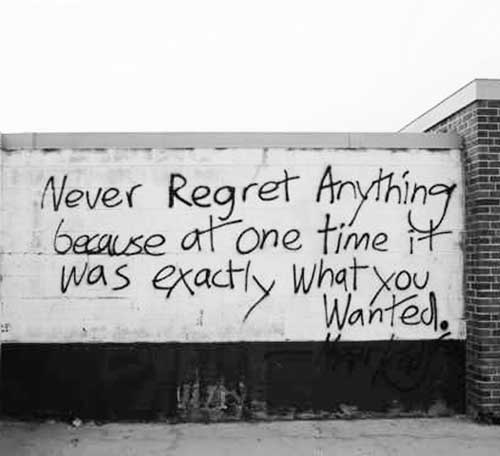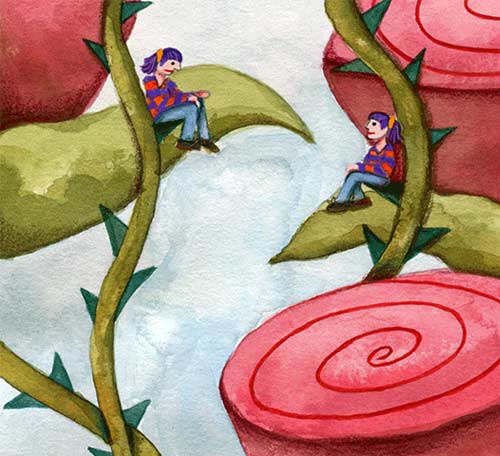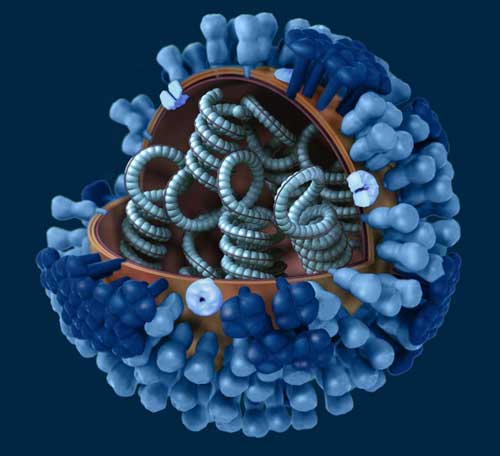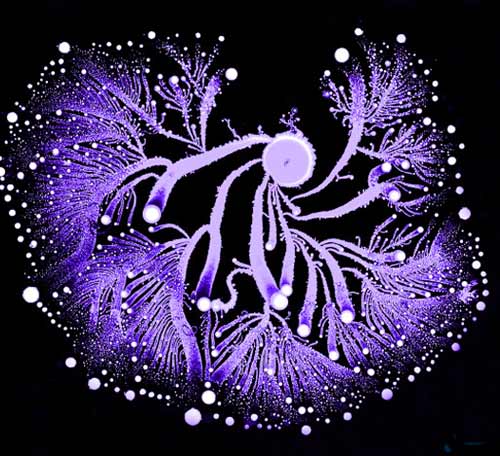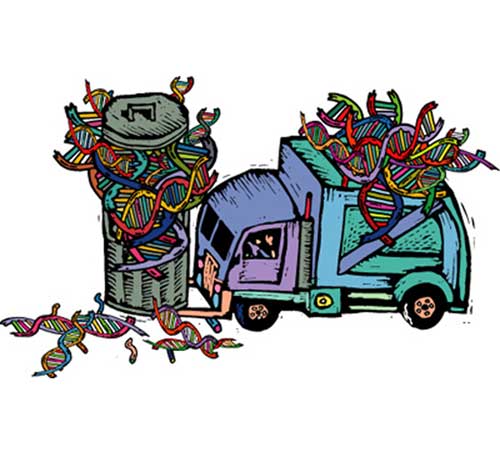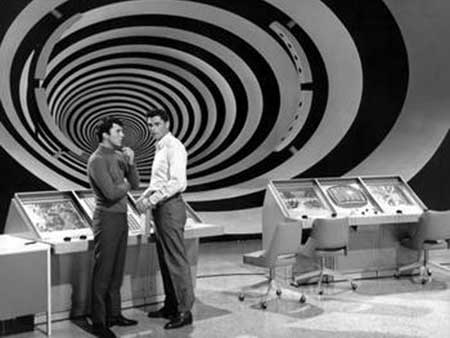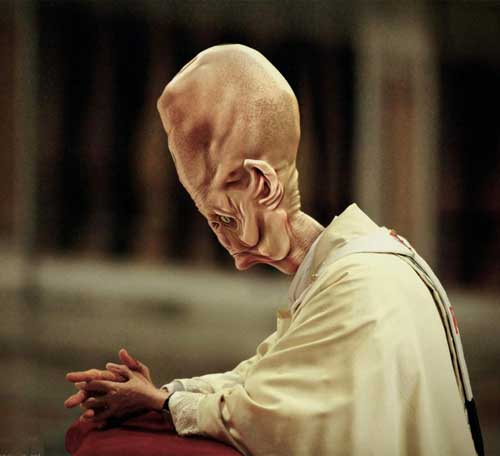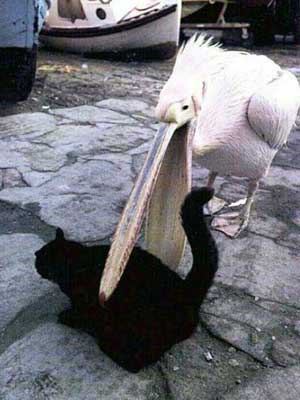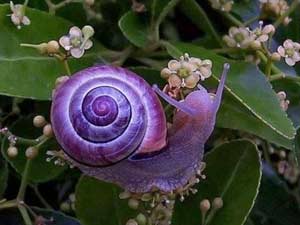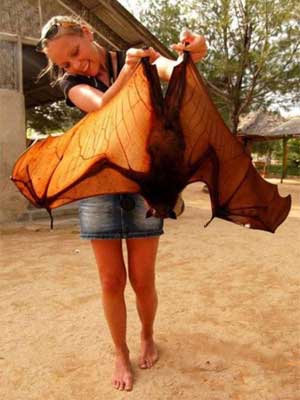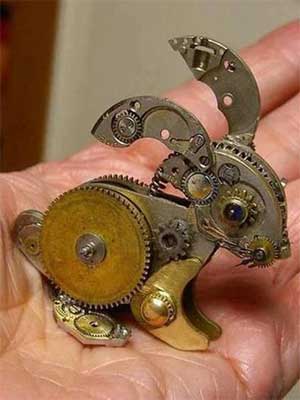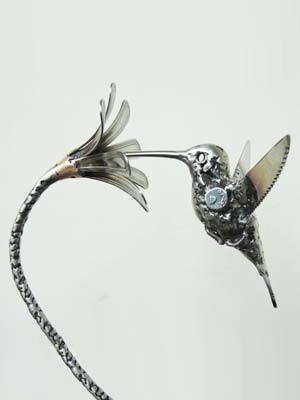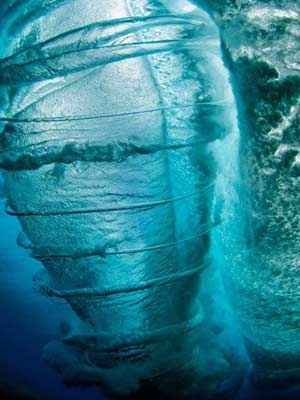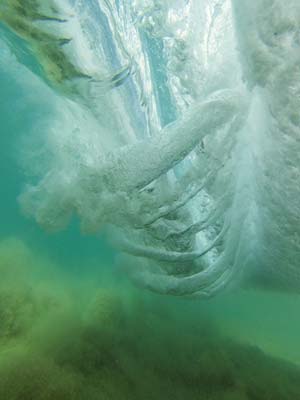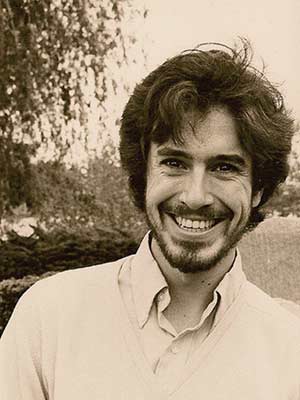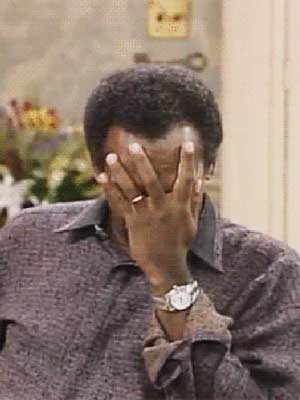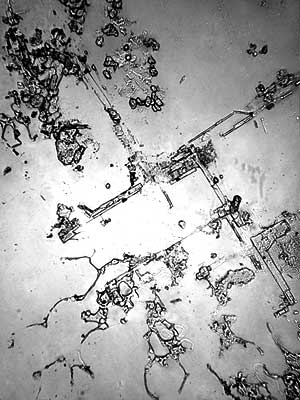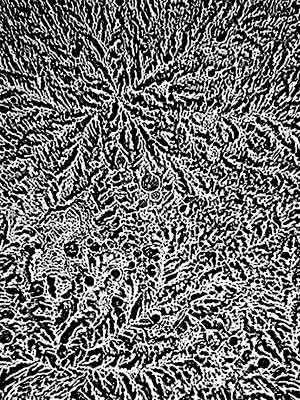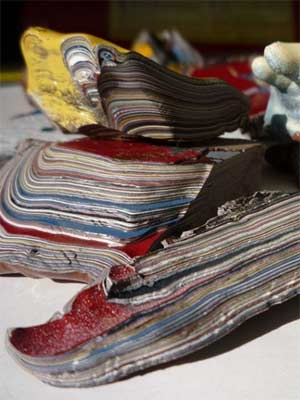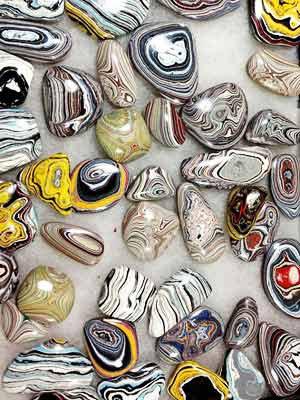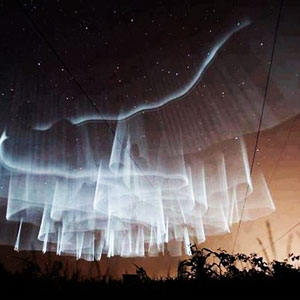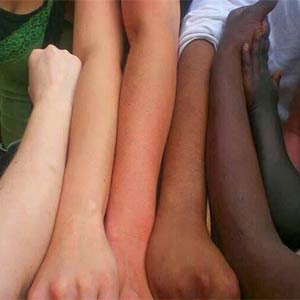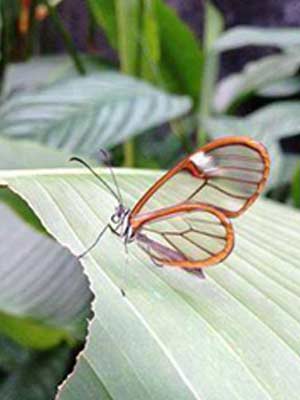If you have 11 alternatives, you’ll have 12 options.
—Demons of Gadara
June 15, 2014
“Legion” is a group of demons referred to in the Christian Bible when Jesus heals a man from Gadara (today thought to be Umm Qais, a town in northern Jordan where Jordan, Israel, and Syria meet). The man was said to be possessed by demons—the Gospel of Mark 5:9, describes: And Jesus asked him, “What is thy name?” and the man answered, saying, “My name is Legion: for we are many.” This phrase has recently undergone a revitalisation in popular Western media. The man from Gadara may have been experiencing dissociative identity disorder, a mentally-out-of sync condition taken to a serious extreme. This post isn’t about mental disorders, however, but rather about an alternative view of normal mental functioning and awareness.
In short, I think that existence is fractal, that we are made up of smaller, living, conscious entities (we are legion) and that we are part of larger, living conscious entities (we are also legionnaires). We don’t all have to know our various component parts (or even to be aware of them) to function adequately. But sometimes looking at what happens to a brain when its parts get out of sync can be helpful in understanding what’s happening when things are going well.
Nature has been a source of great inspiration—and great confusion—since humans started practicing something recognisable as science. Many innovations, even today, trace their roots back to natural origins; some animal or species of bacteria has already figured out how to do something, and we simply need to replicate it in the laboratory and repackage it for consumers. One area where this hasn’t been the case, however, is consciousness. It’s long been an assumption, particularly of the more pretentious, that consciousness is a uniquely human attribute and that we alone are self-aware. Why would anyone think that? Considering our similarity to other species (such as apes), and our variety, how could it be that we are, all of us, conscious, yet our closest relatives in the animal kingdom are not?
But if animals have some degree of consciousness, where does this end? Cats? Mice? Worms? Is there some magical size at which consciousness pops into being, but past which no such thing exists? Or is it a linear progression, and all living things possess some degree of consciousness—we just happen to possess more? If that’s the case, again, where does it stop? Are bacteria conscious? Are viruses?
And yet this just brings up more complications. Cut a branch off a tree and you can plant it and grow a new tree, a clone of the original. If consciousness is something that all living things have, then do plants have it? What must it be like for the tree? What must it be like for the branch?
Stressed?
Dissociative identity disorder (DID) (previously known as multiple personality disorder) is a mental disorder characterised by at least two distinct and relatively enduring identities or dissociated personalities that alternately control behaviour (as in The Strange Case of Dr Jekyll and Mr Hyde, the original title of a novella written by Scottish author Robert Louis Stevenson in 1886). DID is accompanied by memory impairment for important information not explained by ordinary forgetfulness.
There are questions regarding the civil and political rights of alternative personalities, particularly which of the alter egos can legally represent the person, sign a contract, or vote. (Cicero was the first to coin the term alter ego as part of his philosophical construct in 1st century Rome; he described it as “a second self, a trusted friend”.) Individuals diagnosed with DID who are accused of crimes may deny culpability due to the crime being committed by a different identity state. But this doesn’t often work because not everyone agrees on how to interpret this.
Split-brain is a lay term used to describe the result when the corpus callosum connecting our two main brain hemispheres is partially or completely severed. (Only placental mammals even have two brain parts that need connecting.) A group of recognisable symptoms are produced by the disruption this severing produces (usually performed as a last resort in the treatment of a certain type of epilepsy). Scientists wonder whether split-brain patients are “of two minds”. It’s hard to say, but it’s certainly possible. For example, Kim Peek, arguably the most well-known savant ever (born 1951, died 2009), had a complete absence of a corpus callosum. Though he had an IQ of only 87, he memorised more than 9,000 books, which he read two at a time, one with each eye. It seems Kim had developed language areas in both his brain hemispheres, an uncommon feat in split-brain patients. In fact, it appeared that Kim had two functioning brains.
The dual brain theory says that the two cerebral hemispheres of the brain may sense and react to their environment independently from one another (thus developing two consciousnesses?) and one brain half generally dominates the other. Patients who experience traumatic events may develop a degree of personality dissociation. In addition, studies of healthy people with intact corpora callosa have shown that they too can have differing abilities and emotional responses associated with each of their two hemispheres. So, do we actually have two independently-thinking brains? Since normally the hemispheres can’t talk to each other (only one will have language ability) then how can they communicate? How can each one even be aware of the other’s presence?
I recently had an argument with a close friend. I was really angry. Later, I wondered why it had seemed so important at the time to make my position perfectly clear. What was being disagreed no longer seemed worth escalating. I shouldn’t have done it then and regretted it now. So who was that grumpy person who had got mad? A me that no longer exists? What’s going on in our brain(s)?
Consider the following:
The insular cortex is the part of the brain involved in perception, self-awareness, and regulating the body’s homoeostasis. It’s implicated in an astonishingly large number of widely-differing functions, ranging from pain perception and speech to processing of social emotions. The large, spindle-shaped cells in its 5th layer are not only confined to large-brained mammals such as whales, elephants, apes, and humans, but also occur in monkeys and prosimians, as well as in the pygmy hippopotamus, the Atlantic walrus, and the Florida manatee. What might all these mammals have in common?
The insular cortex seems to be intimately involved in decision making, especially when outcomes are uncertain. Individuals must often decide which of several alternatives to pursue and sometimes one or more of these options have potentially aversive outcomes. In that case, the insular cortex can become especially activated. Perhaps due to anticipation of negative events, this activation correlates with actions indicating risk aversion and a sensitivity to punishment. When lesions occur in the insular cortex (reducing function), individuals prefer riskier options in gambling tasks—that is, options in which outcomes are less certain but rewards are higher. When this region is active (enhancing function), individuals seem to find adversity unusually unappealing. (This is a major building block of personality.) Sometimes, we are faced with but two alternatives, one increasing equity, the other reducing it but increasing aggregate resource. An example: a government must decide whether to fund all schools (improving equality) or to preferentially fund schools that perform well (encouraging performance but undermining equality). As fMRI studies highlight, when activity in the insular cortex elevates, individuals prefer more equitable options. Apparently, the basis for political parties and economic theories is “baked in” to our brains.
Our brains generate our “experience of self” by merging information about our bodies from external sources such as the eyes, ears, and skin, with internal sources such as the heart and stomach. A lesion in the insular cortex often prevents the brain from integrating these external and internal perceptions so that internal and external bodily states get out of sync. This can result in a corrupted sense of self. The brain attempts a plausible explanation; the most common offered is that a “double” is present, a doppelganger. (I think a doppelganger is always present—but a completely-functional insular cortex blends it into “you” so you don’t inotice. There may even be multiple doppelgangers.)
Stimulating the brain’s temporoparietal junction, which integrates and pre-processes inputs from the external environment and from within the body, will, to a lesser degree, also induce a doppelganger, though the feeling isn’t as strong. Furthermore, experimental subjects can be induced to essentially become doppelgangers by identifying with their virtual avatars. Researchers flashed images of subjects’ bodies to them (which represent external input) in synchrony with their heartbeats (representing internal input). After a few minutes, many subjects felt a stronger identification with their virtual bodies than their corporeal ones, and felt themselves physically located where their avatars were—2 metres from their actual locations.
Dissociation and depersonalisation have always been coping mechanisms for out-of-sync inputs. And, like Cicero, some people develop strong affinities with their doubles. They’re seen as special friends—a connection with parts of themselves both familiar and reassuring. So hallucinations, normally a symptom, can also be a tool.
Our bodies are collections of genes, chromosomes, viruses, bacteria, organs, and systems. I think our consciousness changes because our component parts are always changing. Can our “parts” themselves be infused with drops or boluses of consciousness that our brains blend into the consciousness we believe we experience? This idea isn’t as far-fetched as it may sound. Our brains need compartmentalisation to work optimally. If each of these compartments has a rudimentary consciousness, but these “selves” are reasonably harmonious, who notices? A “normal” personality has variations.
Before discussing further the building blocks of consciousness, I’d like to talk about what it means to be alive and what it means to be conscious. (This is the Ultra-Lite version, obviously.)
Life
Origin-of-life studies have been a feature of chemistry for a long time. It’s clear from scientific data that the common molecules of organic chemistry are abundant in the universe. Amino acids and simple carbohydrates are apparently part of the clouds that makes up new solar systems (which are continuously forming). But how—and why—do molecules organise themselves into gradually more complex systems?
Living things tend to be much better at capturing energy from their surroundings and then dissipating it as heat. When there’s energy (like the sun) and surrounding heat (like oceans or atmospheres), life often restructures itself gradually so as to more effectively take up and dissipate heat. Apparently (under certain required-but-common conditions) matter can acquire and display this key physical attribute most often associated with life. Elements may occasionally be said to cooperate. Under the right conditions, self-organising and replicating systems seem “baked in” to thermodynamic processes. Combine this with the organic chemistry commonly found under astrophysical conditions and we shouldn’t be surprised to frequently find living creatures, full of amino acids and carbohydrates, using sunlight and chemical energy dotted around the universe. (Other factors—such as encountering necessary catalysts at appropriate times—are also required, but their impact is unknown. They may be why we haven’t actually found any life yet other than what’s on Earth—because life ebbs and flows and our region is currently in a low spot.)
Some (presumably) rational people think the whole universe may be alive and conscious. Quantum computer expert and professor Seth Lloyd of the Massachusetts Institute of Technology believes that all subatomic particles can think, and if we regard the universe itself as a quantum computer, the universe is more than alive—it constantly processes information. “The universe,” he says, is “the ultimate intelligent organism.” Lee Smolin of the Perimeter Institute for Theoretical Physics in Waterloo, Canada is investigating the possibility that the universe evolves by natural selection. Smolin’s work shows that black holes, regions of such massive gravity that not even light escapes (hence the name) are responsible for creating new universes from what is at the “bottom” of the black hole. As universes age, they evolve or die, depending on whether they’re evolutionarily successful. It follows in Smolin’s work that the most successful universes will be those that reproduce most successfully—that is, those that create the most black holes. Quantum cosmologist Stephon Alexander suggests that the universe may even have a heartbeat—it can be found in the Big Bounce model of the universe’s beginnings. The Big Bang posits that a very dense, extremely hot, cluster of matter exploded, which has resulted in the universe we see today. The Big Bounce model differs in that it posits a previous universe which collapsed, and in turn “bounced out” into the universe that we now inhabit. These contractions and expansions of the universe may be seen as the beating of the cosmic heart. He thinks the force that drives the universe back into expansion from near the final imminent collapse into a singularity are neutrinos that reach a superfluid state when under massive gravitational compression.
Consciousness
At what point does life gain “awareness of being” (consciousness)?
The various theories of consciousness can be grouped into categories. I picked these (not an exhaustive list): materialism, dualism, panpsychism, neutral monism, idealism, holism.
- The current mainstream view looks for materialism explanations. This typically takes the form of arguing that consciousness must be a higher-level activity that has emerged from lower level processes, such as complex biological interactions. This can be used as an argument that humankind (perhaps via the internet) may become collectively conscious in the future—perhaps enough to communicate as a unified voice with representatives sent from Vega (it’s only 25 light-years from Earth and it has at least one planet).
- Dualism has historically been the most important alternative to materialism, at least since Descartes. Material dualism holds that matter and consciousness are two substances that differ fundamentally in a number of ways. This and other differences lead to the perhaps-unsolvable problem of how such fundamentally different substances interact. Historically, support for dualism fits religious notions of the soul and supernatural agencies.
- Panpsychism holds that matter and mind are joined as one so that mind is a universal feature of all things. The usual view holds that all matter, even an electron, has some aspect of mind, albeit rudimentary. While panpsychism has relatively few adherents today, it has a long history in philosophy (Thales, Plato, Spinoza, Leibniz, William James, and Alfred North Whitehead, who drew on the indeterminacy observed by quantum physics to defend it).
- Neutral monism holds that matter and consciousness are aspects of a more basic reality; the mental and the physical are merely two ways of organising or describing the same things, which are of themselves “neutral”, that is, neither physical nor mental. Neutral-monist-leaning philosophers such as Galen Strawson, Roger Penrose, John Searle, Thomas Nagel, Bertrand Russell, and Noam Chomsky have all more-or-less said that a revolutionary change in physics is needed to solve the “problem” of consciousness.
Two primary objections for panpsychism and neutral monism are
(1) the unappealing implication that non-biological objects such as rocks possess some level of “what it is like to be” and
(2) the perplexing question of how small units of consciousness might combine to create a richer, unified conscious experience (like cells have combined to create a human).
- Idealism holds that the physical universe is completely mind and, since the foundation of physics requires an observing agent, this could explain the existence of galaxies far beyond our perception. Theist philosophers or ancient believers in a pantheon were drawn to some version of idealism. Panpsychism agrees with idealism that in a sense everything is aware, but idealism treats most reality as thoughts while panspychism treats most reality as having awareness. Idealism is viewed as least compatible with naturalistic explanations and has few proponents today.
- The rest: The holism view is that the universe is a single organism possessing a mind (a cosmic consciousness) made up of lesser living things such as Earth, a living organism whose life stems from its people, animals, and plants. Hylopathism argues for the universal attribution of sentience to matter (not just alive, but learning). Philosopher David Chalmers is one who contemplated the idea that consciousness is a fundamental feature of the universe. He said, “It can sound strange at first hearing. Many find it extremely counter-intuitive to suppose that fundamental physical systems have phenomenal properties: for example, that there is something it is like to be an electron.”
If the universe is alive, then its consciousness most likely exists in many areas, thus making it the extreme super-organism.
Consciousness refers to a process that may, then, occur in any organism, from the prokaryotic cell to the human being. Is it the process of receiving signals (from outer environment and inner domain) and translating them into appropriate biological responses? There’s a wide spectrum of potential awareness, from a hypothetical organism that can see one percept—meaning it has just one receptor and effector so it can only focus on one thing, to a human being, who has an enormous range of awareness and versatility in terms of response. Many orthodox biologists define consciousness as a strictly-human phenomenon but many others disagree (as do I). There are great differences between the signal reception-response expressed by a unicellular organism and the signal reception-response expressed by a human being, but these differences don’t justify the hypothesis that there’s no relationship between awareness at the cellular level and awareness at the human level. Indeed, from the point of view of methodology, such a “negative hypothesis” is invalid. It’s possible to prove that which is, but how do you find evidence for the non-existence of something?
Special Cases: Are Viruses Alive? Are Bacteria Sentient? Is Junk DNA Important?
Viruses
We all start out as fertilised eggs, each a single cell about as wide as a hair shaft. That beginning sphere grows into the 10 trillion cells (at any given time) that make up each of our bodies. A couple hundred types of cells arise as we develop, including skin, bone, blood, and neuron cells. What makes this possible? In part, viruses. Sometimes viruses make us sick; sometimes our immune systems vanquish them, and sometimes we incorporate then into ourselves. One type of virus, the retrovirus, makes copies of itself by inserting its own genes into the DNA of a cell. The cell then uses those instructions to make the parts for new viruses. (HIV and hepatitis C make their living in this way.) On rare occasion, a retrovirus may infect an egg. If the egg becomes fertilised and gives rise to a whole adult individual, all its cells will carry that virus. If that individual has offspring, the next generation will incorporate it as well. Over hundreds or thousands of years, the virus becomes imprisoned, its DNA mutating until copies of its genes can only be inserted back into cells from its host. Eventually, most mutate until they become genetic baggage, unable to act. The human genome contains about 100,000 fragments of endogenous retroviruses—8% of all our DNA. But that viral debris is a font of raw material for new adaptations. From time to time, our ancestors have harnessed such viral DNA. In one important example, they used it to help transform eggs into adults:
As an egg starts to divide, it produces new cells capable of becoming any part of the embryo, or the membrane surrounding the embryo, or the placenta. At this early stage, you can pluck a single cell from the clump and use it to grow an entire organism. These earliest cells are called totipotent. But once the embryo reaches the hollow-ball stage, its cells have lost the ability to give rise to an entirely new organism on their own because they can no longer produce all the tissues required to keep the embryo alive—they’ve become pluripotent. They’re versatile still, but more-and-more locked into being certain types of cells—some can turn into lots of different kinds of blood cells but can no longer become, say, any kind of skin cell. Over 100 genes are active at the two-cell stage but these simultaneously shut down when the embryo becomes a hollow ball. One way cells switch genes on and off is by producing proteins that latch onto stretches of DNA called promoters. The match between proteins and their promoters must be precise; otherwise genes will flip on at the wrong times or fail to make the required protein when needed. Those promoters all come from viruses. It is only once the viral DNA has been silenced that cells can begin to differentiate themselves.
The domestication of these virus promoters was a key step in the evolution of mammals with placentas. A peculiar gene in the human genome encodes a protein called syncytin, which is only found in cells in the placenta. The cells that make syncytin are located where the placenta makes contact with the uterus. They’re odd cells that fuse together to create a single cellular layer that’s absolutely essential to the fœtus for drawing nutrients from its mother. In order to fuse, the cells must make syncytin—which comes from a gene contributed by a virus.
Life is not embodied in its molecular building blocks, but is instead a characteristic of the ways in which the parts interact. It may be that life can be created from a completely novel pool of constituents—just as a computer can be made from ping-pong balls running down tubes instead of from silicon chips. Despite the hype of the human genome project, life’s grandeur doesn’t reside in filaments of DNA but rather in its connections. Can there BE an airtight set of criteria that a living organism must meet? Must a living entity have a defined boundary? Can a computer programme, the internet, or planet be “alive”? Some questions are not easily answered.
This futility was recognised 70 years ago by British virologist Norman Pirie, who wrote: “'Life’ and 'living’ are words the scientist has borrowed from the plain man. The loan has worked satisfactorily until comparatively recently, for the scientist seldom cared and certainly never knew just what he meant by those words, nor for that matter did the plain man. Now, however, systems are being discovered and studied which are neither obviously living nor obviously dead, and it becomes necessary to define these words or else give up using them and coin others.” It’s natural a virologist like Pirie would understand this, because viruses are nature’s reminder that there are no firm boundaries between animate and inanimate realms. No one knows whether or not to call viruses living. Their genes are sometimes, as in the case of polio, encoded not in DNA but in RNA; they can’t reproduce autonomously as they must infect a host organism and borrow enough cellular enzyme machinery to make copies of themselves.
It therefore remains a moot point whether, by creating viruses, synthetic biologists actually “make” life. (I’d say no.) But while viruses inhabit a grey area, bacteria are clearly alive, single-cell organisms that sequester raw materials and energy from their environment and replicate on their own. No one has synthesized a bacterial cell chemically yet, but it could soon happen.
Bacteria
This is another life-form found in the placenta. Headless, heartless, brainless, with a primitive cell for its entire body, one DNA molecule for a chromosome and a lifespan measured in minutes, some species just make it under the qualifying wire as organisms. Medical experts have long assumed that any bacteria found in the placenta must’ve been picked up when it passed through the vagina after delivery. But instead, babies were found to have a community of bacteria in their guts when born (mostly benign species known to provide services such as metabolising vitamins); these bacteria don’t match those in the mothers’ vaginas. Oddly, they appear to come from the mothers’ mouths (affirming the idea that good oral hygiene could be important for a healthy pregnancy; there can be as many as 600 species of bacteria on mom’s teeth every morning). Microbes can theoretically get to the placenta from the mother’s mouth through her blood, maybe when she brushes her teeth and dislodges a few cells into her bloodstream (there’s a well-known correlation between gum disease and pre-term birth). When a mother first kisses her newborn child, her mouth bacteria are already known to her baby—perhaps she “tastes” it to know on some level that it’s hers.
Investigators are finding that in many ways an individual bacterium is more like a component cell of a multicellular organism than it is a free-Iiving, autonomous organism. Bacteria form complex communities, hunt prey in groups and secrete chemical trails for the directed movement of thousands of individuals. Quorum sensing describes ways in which bacteria determine how many of them are in the vicinity. If enough are present (a quorum), they can get down to business or up to mischief. The study of quorum sensing has its roots in the late 1960s when 2 scientists discovered that a marine bacterium, Vibrio fischeri, produced light when its population reached a critical size. When fewer were present, the bacteria didn’t glow. Does a bacterium release some sort of signal? Is this putative signal an autoinducer? Does it cry out, like Horton the elephant’s dust speck in the Dr Seuss book, “We are here! We are here! We are here! We are here!”? When the cacophony becomes loud enough, does this make the assemblage light up?
The investigators found that every bacterium they tested had its own personal autoinducer that it used to communicate with its own kind. Further, later ingenious experiments have shown that bacteria have rudimentary memories and can make decisions. They seem to have long-term memory and other abilities of “thoughtful” creatures—and despite identical genes, in spite of the same environments, individual E coli acquire unique personality quirks that each continues to display until death (meaning they each exhibit rudimentary personalities determined neither by heredity nor by environment but by some chance combination). A zone of uncertainty—of individuality, if you will—surrounds the neighbourhood of intelligence in even the lowliest life forms. Talk of individuality brings a microbial mind close indeed to the realm of human experience.
In the Permian era, a vast inland sea covered much of west Texas and south-eastern New Mexico. As the outlet linking this sea to the ocean became blocked, the sea began to evaporate slowly, leaving behind mineral and saline deposits—the so-called Salado Formation. Trapped inside crystals of rock salt were tiny drops or “inclusions” of brine, capable of serving as perfect biological time capsules from the era. Of the 66 inclusions examined, 3 showed evidence of viable bacteria. One strain was characterised—a spore-forming bacteria dubbed 2-9-3. This bacteria strain was able to tolerate salinity only to a certain extent. When its surroundings grew too salty, it formed spores and waited until conditions improved. Indeed, this seems to have been the key to its longevity. As the Permian sea dried out, 2-9-3 retreated into its spore, where it survived comfortably, encrusted in salt, until aroused from its suspended animation a mere 250 million years later.
This gives rise to another, more fascinating, speculation: could such long-lived spores have been the vessels that spread life throughout the universe? This theory, known as “panspermia” (literally, “seeds everywhere”), turns on the existence of organisms tenacious enough to survive long difficult journeys across vast distances of interstellar space. 2-9-3 provides the most convincing evidence to date that such creatures do exist. Crossing the galaxy in their crystal ships, these spores could flourish on any planet where they found a hospitable environment. That scenario could’ve brought life to Earth, aeons ago. And it could mean that similar Earth-like planets produce Earth-like creatures from the same “seeds” (aliens could indeed look a bit like us).
Group behaviour in bacteria has been demonstrated so widely that many microbiologists simply view bacteria as multicellular organisms, whose activity—from gene swapping to swarming to biofilm construction—is mediated by a wide variety of chemical communications. Perhaps they experience a tiny bit of consciousness as well.
Swapping genes is something humans virtually never do but bacteria do readily. The genes may be carried by viruses that jump from one bacterial host to another; in other cases, bacteria slurp up DNA from dead microbes, then insert it into their own genomes. In still other cases, genes spontaneously slice themselves out of one genome so as to get inserted into the DNA of a distantly-related species. The most famous example of this process is antibiotic resistance. One reason resistant bacteria can spread so quickly in a hospital is that inheritance isn’t the only way these microbes acquire the genes that can fight off a new drug—genes get transferred from one bacterial species to another; the lucky bugs receiving these resistent genes soon out-compete cousins who lack this new defence. Horizontal gene transfer (as it’s known) may involve a single gene or an entire network. And if two networks arrive together at an alien genome, they can combine into a bigger network that’s able to do something entirely new. Horizontal gene transfer gives bacteria an extra dimension of creativity.
The post-antibiotic era that many fear we’ave entered can mean, in effect, an end to modern medicine as we know it. Things as common as a strep throat or a child’s scratched knee could once again kill. Right now, if you want to be sharp-looking and get a tattoo, you’re not putting your life on the line. Botox injections and liposuction may also become life-threatening. Even driving to work may beome more dangerous because we rely on antibiotics to make a major accident something we can survive.
But most of the time, believe it or not, bacteria need a reason to hurt you. Surgery is one such reason. A surgical patient’s normal metabolism alters because nutrients are provided intravenously instead of through the digestive system. In a patient being fed by an intravenous drip, the gut bacteria perceive their sustenance disappearing. A decline in available nutrients alarms them. And surgery triggers the release of stress compounds they can sense. Chemotherapy and radiation have similar effects. When threatened, bacteria become defensive, often producing toxins that make their host ill. They tend to speed up their acquisition of, and purging of, genes when under external selection pressure, of which antibiotics are an obvious and powerful example.
In only a year, bacteria can develop resistance to a new drug that took years and a fortune to develop. Bacteria know how to glean information from their environment, talk with each other, distribute tasks, and generate collective memory. Bacterial social intelligence, conveyed through advanced chemical language, allows bacteria to turn colonies into massive “'brains” to process information, learn from past experience, solve unfamiliar problems and better cope with new challenges. Bacteria are not the simple, solitary creatures of limited capabilities they’ve long been believed to be.
— Professor Eshel Ben-Jacob, Tel Aviv University’s School of Physics and Astronomy
Microbes, arising early in Earth’s history, could’ve altered primitive global conditions to make possible the development of more advanced organisms. Airborne bacteria may have seeded vapour, causing formation of clouds and rainfall. Manipulation of the environment in this way would have greatly facilitated microbe dispersal and reproduction—thus kick-starting evolution.
Junk DNA
It has been known for several decades that only a small fraction of the human genome is made up of protein-coding sequences, though we know that at least some non-coding DNA has important biological functions: In addition to coding exons, the genome contains sequences that are transcribed into functional RNA molecules, regulatory regions that control gene expression (for example promoters, silencers, and enhancers), the origins of replication, and repeats that play structural roles at the chromosomal level (such as telomeres and centromeres). Nevertheless, a substantial percentage of the DNA in many eukaryotic genomes lacks an organism-level function.
Genome size varies enormously among species: at least 7,000-fold among animals and 350-fold even within vertebrates. Genome size varies independently of intuitive notions of organism complexity or presumed number of protein-coding genes—for example, a human genome contains 8 times more DNA than that of a pufferfish but is 40 times smaller than that of a lungfish. A LOT of organisms have very large genomes—for example, of the >200 salamander genomes analysed thus far, all are between 4 and 35 times larger than the human genome. (Even closely-related species with very similar biological properties can differ significantly in genome size.)
Assume that a population of, say, frogs is reproducing. Every time one produces a new tadpole, that tadpole gains a certain number of mutations. A few of those mutations may be beneficial but most are either neutral or harmful. If harmful mutations emerge at a rate that’s too fast for natural selection to weed out, they pile up in the genome and the population overall gets sicker, smaller, and produces fewer offspring. Eventually, mutations drive the whole population to extinction—a process called “mutational meltdown”. This puts an upper limit on how many genes an organism can have. If a frog has 10,000 genes, it has 10,000 potential targets for a harmful mutation. If it has 100,000 genes, it has 10 times more targets. Estimates of the human mutation rate suggest that somewhere between 70 and 150 new mutations strike the genome of every baby. Based on the risk of mutational meltdown, it’s estimated that only 10% of the human genome must be functional—the other 90% must be junk DNA. If a mutation alters junk DNA, it doesn’t do any harm because the junk isn’t doing us any immediate good to begin with. If our genome was 80% functional, then we’d soon become extinct.
If 90% of the genome does prove to be junk, that doesn’t mean it hasn’t played a role in our evolution. It’s from these non-coding regions that many new protein-coding genes evolve. What’s more, much of our genome is made up of viruses. Every now and then evolution harnesses those viral genes to carry out a job for our own bodies. So junk DNA is very much a part of us, helping to make us what we are.
Instead of being alive, then, it’s possible that viruses are tools used by other living creatures to build better genes; thus viruses may lack awareness of their own. However, poorly used, these viral tools can become weapons.
She began to understand why lovers talk baby talk to one another, There was no other socially acceptable circumstance in which the children inside her were permitted to come out. If the one-year-old, the five-year-old, the twelve-year-old, and the twenty-year-old all find compatible personalities in the beloved, there is a real chance to keep all of these sub-personas happy. Love ends their long loneliness. Perhaps the depth of love can be calibrated by the number of different selves that are actively involved in a given relationship. With her previous partners, it seemed, at most one of these selves was able to find a compatible opposite number; the other personas were grumpy hangers-on.
— Radio-astronomer Eleanor Arroway speaking in the novel Contact by real-life astrophysicist Carl Sagan
Identity
Can identity can be sustained over an extremely long lifespan? If you live to be 85 years old, your body has been inhabited by a succession of people over time rather than by a continuous “you”. (Ask yourself, are you the same person today as you were at 18? Maybe—if today you’re only 18-and-a-half. Otherwise, no.)
Consider: If you put someone in prison for a crime they committed at age 40, they’ll almost certainly be a very different person 10 or 20 years later. (The better the prison, the better chance that the change in trajectory is upward.) Is the justice system now punishing that person for a crime essentially committed by someone else? Is it really OK to lock someone up for the best part of the only life he’ll ever have, or might it be more humane to tinker with his brain and then set him free?
Dr Rebecca Roache, leader of a team of scholars focused upon ways futuristic technologies might transform punishment, claims the prison sentences of serious criminals could be made worse by distorting prisoners’ minds into thinking time was passing more slowly. Does one then count subjective time instead of actual time served? I’d guess no, since Dr Roche was also quoted as saying, “the best way to achieve justice [would be] to prolong death as long as possible. Some crimes are so bad they require a really long period of punishment, and a lot of people seem to get out of that punishment by dying. ... Why not make prison sentences for particularly odious criminals worse by extending their lives?” (Frankly, to me this evidences a degree of revenge that I can’t quite understand.)
Moreover, convicts with a stunted capacity for empathy may one day be chemically or surgically “emotionally enhanced” back to a normal range. Will the remorse they subsequently feel be their most cruel punishment yet? Is it fair to add punishment on top of punishment (especially after sentencing is already settled?).
I’ve thought on many occasions that if I were able to go back in time with the goal of convincing my teenage self to make better early-life choices in certain areas, the me of back then may not wish to listen to the me of now. The younger me might see this older me as trying to act like a parent—someone who doesn’t want younger me to waste time on frivolities. I would then, I think, have seen future me as “other“—not as “us.” But would I have listened? I don’t know. Probably. It would be much too fantastic an experience not to.
Time Travel
Conclusion
In the quantum world, large collections of quantum particle/waves can merge into a unitary coherent state of macroscopic size and influence. Superconductors, BoseEinstein condensates and lasers are unitary states in which component atoms or molecules give up individual identity and behaviour. Such coherent quantum states have been suggested to occur among brain proteins to provide unitary “binding” in vision and to enable us to have a sense of “self”.
Basic awareness is the ability to know, sense, or recognise that something is happening. This is attention awareness, and we have some ability to direct it from one thing to another. The function of attention awareness remains in spite of changes in its content. A second theoretical and experiential given is the existence, at times, of an awareness of being aware, or self-awareness. The degree of self-awareness varies from moment to moment. At one extreme, I can be very aware that I’m looking at a potted plant beside me. At the other extreme, I may be so totally involved in looking at the plant that I’m unaware of being aware of it. This lower end of the self-awareness continuum, relatively total absorption, is probably where we spend much of our lives. The rarity of self-awareness is a major contributor to neurotic qualities of behaviour. Nevertheless, the main function of consciousness (not only in human beings but in all organisms that possess it) is the ability to feel, to receive various impulses and somehow evaluate them before producing a response. Therefore, even a single neuron would have a small—though not null—ability to have an experience.
Within this perspective, if we look at each brain module as being an autonomous and thinking organism—since each one also processes signals—we can see that each of them can have its own consciousness; the module’s function is to receive signals from several other brain regions and process them before returning an answer. Thus, each brain module may have the perception of “self-consciousness”, capable of perceiving itself—or it may not. It’s possible that each of these “conscious-modules” forming our brains feel things very differently from what our consciousness normally does. That’s because our consciousness receives signals output from several modules.
It’s important to realise that this concept of “multi-consciousness” is very different from the “multiple personality” of traditional psychiatry. In the multiple-personality pathology, every facet of personality takes over one’s consciousness in an excluding way—when one personality is active, the others are not. Multi-consciousness is not like that.
There will generally be multiple consciousnesses simultaneously active in our brains and the one we call “consciousness” will be just one of them—perhaps not always the most important one. (Pioneering consciousness researcher Benjamin Libet once set up an experiment showing that our consciousness does not seem to be the main source of our free will. Regarding the unity of conscious experience, it was increasingly evident to Libet that many functions of the cortex are localised, even to a microscopic level, and yet the conscious experiences related to these areas are integrated and unified. We don’t experience an infinite array of individual events but rather a unitary integrated consciousness with no gaps in spatial and coloured images. For Libet, some unifying process likely mediates the transformation into our unified conscious experience.) It’s interesting that we can apparently live with our several internal consciousnesses without even knowing what “they” actually feel and think, or generally even knowing that they’re there.
Likewise, a visiting alien delegation from Vega could employ the term “Earthling” to billions of consciousnesses that they’ve casually blended into a single representation of Earth’s living creatures without knowing what any particular Earthling feels, thinks, or knows.
Sources
“Benjamin Libet” from Wikipedia. http://en.wikipedia.org/wiki/Benjamin_Libet
“The Case for Junk DNA” by Alexander F Palazzo and T Ryan Gregory, PLOS Genetics, 8 May 2014. http://www.plosgenetics.org/article/info:doi/10.1371/journal.pgen.1004351
“The Case for Junk DNA” by Carl Zimmer, Phenomena: A science salon hosted by National Geographic Magazine, 9 May 2014. http://phenomena.nationalgeographic.com/2014/05/09/the-case-for-junk-dna/
“The Creativity of Microbes” by Carl Zimmer, Corante: The Loom, 2 March 2004. http://www.corante.com/loom/archives/002202.html
“Dissociative identity disorder” from Wikipedia. http://en.wikipedia.org/wiki/Dissociative_identity_disorder
“Dual brain theory” from Wikipedia. http://en.wikipedia.org/wiki/Dual_brain_theory
“'Funda-Mentality’ Is the Conscious Mind Subtly Linked to a Basic Level of the Universe?” by Stuart Hameroff, Yoga Psychology Magazine, date not provided. http://yogapsychologymagazine.com/philosophy/quantum-psychology/item/quantum-psychology/funda-mentality-is-the-conscious-mind-subtly-linked-to-a-basic-leveof-the-universe.html
“Hell on Earth” by Ross Andersen, aeon Magazine, 15 March 2014. http://aeon.co/magazine/living-together/should-biotech-make-life-hellish-for-criminals/
“Holographic Minds” by Paul Pietsch, Quest/77 November/December issue in a special feature on brain function, edited by Tony Jones. http://flatrock.org.nz/topics/science/fractal_evolution.htm
“How to Learn to Love Your Doppleganger” by David Levine, Nautilus, 15 May 2014. http://nautil.us/issue/13/symmetry/how-to-learn-to-love-your-doppleganger
“Imagining the Post-Antibiotics Future” by Maryn McKenna, from The Food & Environment Reporting Network, 20 November 2013. https://medium.com/editors-picks/892b57499e77
“Insular cortex” from Psychlopedia. http://www.psych-it.com.au/Psychlopedia/article.asp?id=341
“The insular cortex: a review” (abstract) by R Nieuwenhuys, Prog Brain Res, 2012;195:123-63. doi: 10.1016/B978-0-444-53860-4.00007-6, 2012. http://www.ncbi.nlm.nih.gov/pubmed/22230626
“Is the universe alive? Does it evolve, think, reproduce?” by Gary Weber, Happiness beyond Thought: A Practical Guide to Awakening, 25 July 2012. http://happinessbeyondthought.blogspot.co.nz/2012/07/is-universe-alive-does-it-evolve-think.html
“Mammals Made by Viruses” by Carl Zimmer, Phenomena: A science salon hosted by National Geographic Magazine, 14 February 2012. http://phenomena.nationalgeographic.com/2012/02/14/mammals-made-by-viruses/
“Microminds: the Minds of Microbes” by Paul Pietsch, Science Digest, October 1983. http://flatrock.org.nz/topics/science/talking_bacteria.htm
“Multi-Consciousness” by Juan Carlos Holland de Barcellos, Genismo, November 2007. http://www.genismo.com/englishtext_17.htm
“Neutral monism” from Wikipedia. http://en.wikipedia.org/wiki/Neutral_monism
“Panpsychism” from Wikipedia. http://en.wikipedia.org/wiki/Panpsychism
“Placenta Harbors Bacteria, May Impact Fetal Health” by Jocelyn Kaiser, Science Magazine, 21 May 2014. http://news.sciencemag.org/biology/2014/05/placenta-harbors-bacteria-may-impact-fetal-health
“Prisoners 'could serve 1,000 year sentence in eight hours’” by Rhiannon Williams, The Telegraph, 14 March 2014. http://www.telegraph.co.uk/technology/news/10697529/Prisoners-could-serve-1000-year-sentence-in-eight-hours.html
“Psi and the Problem of Consciousness” by George Williams, Journal of Mind and Behavior 34:259-284, Summer and Autumn 2013 http://philpapers.org/rec/WILPAT-20.
“Split-brain” from Wikipedia. http://en.wikipedia.org/wiki/Split-brain
“Talking Bacteria” by Marguerite Holloway, Scientific American, February 2004. http://flatrock.org.nz/topics/science/talking_bacteria.htm
“A semi-synthetic organism with an expanded genetic alphabet” by Denis A Malyshev, Kirandeep Dhami, Thomas Lavergne, Tngjian Chen, Nan Dai, Jeremy M Foster, Ivan R Corrêa and Floyd E Romesberg, Nature 509, 385–388, 15 May 2014. http://www.nature.com/nature/journal/v509/n7500/full/nature13314.html
Strange Case of Dr Jekyll and Mr Hyde from Wikipedia. http://en.wikipedia.org/wiki/Strange_Case_of_Dr_Jekyll_and_Mr_Hyde
“Thermodynamics of Life”, Derek Lowe, Corante: In the Pipeline, 7 February 2014. http://pipeline.corante.com/archives/2014/02/07/thermodynamics_of_life.php
“The Universe May Be Alive and Have a Beating Heart” by Laura Kemmerer, nvate, 25 October 2012. http://nvate.com/7163/universe-alive/
“We Are Viral From the Beginning” by Carl Zimmer, Phenomena: A science salon hosted by National Geographic Magazine, 14 June 2012. http://phenomena.nationalgeographic.com/2012/06/14/we-are-viral-from-the-beginning/
“What Is Life? Can We Make It?” by Philip Ball, Prospect Magazine, August 2004. http://flatrock.org.nz/topics/science/is_this_the_essence_of_life.htm#life
The Distillery
For lack of attention a thousand forms of loveliness elude us every day.
— Evelyn Underhill
Pain / Vain / Plain
Steampunk Animals
Some steampunk appears to be just random bits glued together—lovely, perhaps, but not very functional. Yet some of the pieces capture its spirit, with gears that turn, secret doors that open, or surprises on springs that pop out to say hello.
Looking Up, Falling Down, Running Away
- Lying on the ocean floor in Oahu, Hawaii, Clark Little pointed his camera upward and captured an unusual perspective of a wave as it rolled over him, creating tornado-like spirals.
- Since this photograph is also by Clark Little, I would guess it was also taken in Hawai’i.
- The crystal clear water of Hawaii makes for some excellent conditions for taking pictures underwater. You can see the tube of air called the barrel, as well as turbulence created by the white water.
- What is causing the internal illumination? It seems to be centered. This is the only instance online that I could find of this particular photo. Since the blogger on whose site I found this lives in Peru, I assume that’s where the photo was taken. Did he take the photo? I don’t know—he didn’t say and never gave his name.
- The rare fire rainbow was spotted at the River Spey in Moray, Scotland. Appearing as a cascade of colour tumbling out of the clouds, the phenomenon lasted only 20 seconds.
- Strohgaeu Baden-Wuerttemberg during the harvest.
- A complex storm approaches.
- The Liguria region of Italy apparently has frequent water spouts. This is Zoagli in 2008.
- Waterspout in Tampa Bay, Florida. The sun is rather stunning.
People—Incidental and Not
- The camera weighs “only” 6 pounds and the recorder pack “just” 12. This ad ran in Scientific American. (Who else but scientists would climb a tree in a business suit?)
- A younger Stephen Colbert…
- Click on the photo of Bill Cosby to see just what you won’t be able to unsee afterward—the Fifa World Cup logo. The yellow part of the logo becomes an arm with its hand pressed into a green head. Once you see this possibility, you see it every time from then on.
Tears, Idle Tears. We Now Know What They Mean.
Oh, and Semi-precious Stones Can Be Made from Paint
- As part of a new project called “Topography of Tears,” Rose-Lynn Fisher used microscopes to give an unexpected view of another familiar subject: dried human tears. Fisher collected, examined and photographed more than 100 tears from both herself and a handful of volunteers, including a newborn baby. (He volunteered?)
- Scientifically, tears are divided into 3 different types, based on their origin. Both tears of grief and tears of joy are psychic tears, triggered by extreme emotions, whether positive or negative. Basal tears are released continuously in tiny quantities (on average, 0.75 to 1.1 grams over a 24-hour period) to keep the cornea lubricated. Reflex tears are secreted in response to an irritant, like dust, onion vapours or tear gas.
- All tears contain a variety of biological substances (including oils, antibodies and enzymes) suspended in salt water, but as Fisher saw, tears from each of the different categories include distinct molecules as well. Emotional tears, for instance, have been found to contain protein-based hormones including the neurotransmitter leucine enkephalin, a natural painkiller that is released when the body is under stress.
- Quartz? No, from these layers of dried autopaint will come a new mineral christened fordite. As vehicles were painted, the excess dripped down onto the equipment used to move the cars. This paint was baked along with the cars and solidified. After hundreds or thousands of times, these deposits grew to be several centimeters thick.
- Who knew that taking a lapidary wheel to dried paint would have such stunning results?
- The fordite was eventually transformed into jewelery. When ground and polished, they reveal a stunning variety of colours. Jewels made from paint dripped from Brazilian cars would be a monochrome (shades of gray to black) because almost all new cars sold there are those colours.
Visual Tricks
- This never seems to work when I try it. How-to instructions found here.
- No mention of how many shots were required to get one that was perfect.
- The magical frame of invisibility? A picture of grass?
Left Overs
- Taken in Bridgehaven, California during a lunar eclipse. (Enough post-processing occurred that the photographer filed it under “conceptual”.) It was shot just before sunrise, December 2011.
- Aurora borealis in Finland. I was surprised at the lack of colour, which apparently can happen due to ionization of the atmosphere by energetic particles from a solar storm.
- In Colorado, snow during the month of May can lead to weird things. (This reminds me of the white northern lights.) This photo was taken at a playground in Buckley Park, Montrose, Colorado.
- This garage door decal is one of many. Supposedly, the purpose is to “attract your neighbours”. (Better ask your wife first.)
- Cala Macarelleta, Menorca, Spain is one of the places with the clearest water and cleanest beaches in the world.
- The human body comes in various shades. Here is a sample..
- Rocks, too, come in different shades: psychedelic bands of sedimentary stone beautify a dry wash in Valley of Fire, Nevada.
- The greta oto butterfly lacks the coloured scales found in other butterflies. The opaque borders of its wings are dark brown, sometimes tinted with red or orange, and its body is dark. Adults range from Mexico through Panama and Colombia and also fly through Florida. This picture was taken in Costa Rica.
- These planes were flying (perfectly) in South Shield, England.
 Animals
Animals Animation
Animation Art of Playing Cards
Art of Playing Cards Drugs
Drugs Education
Education Environment
Environment Flying
Flying History
History Humour
Humour Immigration
Immigration Info/Tech
Info/Tech Intellectual/Entertaining
Intellectual/Entertaining Lifestyles
Lifestyles Men
Men Money/Politics/Law
Money/Politics/Law New Jersey
New Jersey Odds and Oddities
Odds and Oddities Older & Under
Older & Under Photography
Photography Prisons
Prisons Relationships
Relationships Science
Science Social/Cultural
Social/Cultural Terrorism
Terrorism Wellington
Wellington Working
Working Zero Return Investment
Zero Return Investment